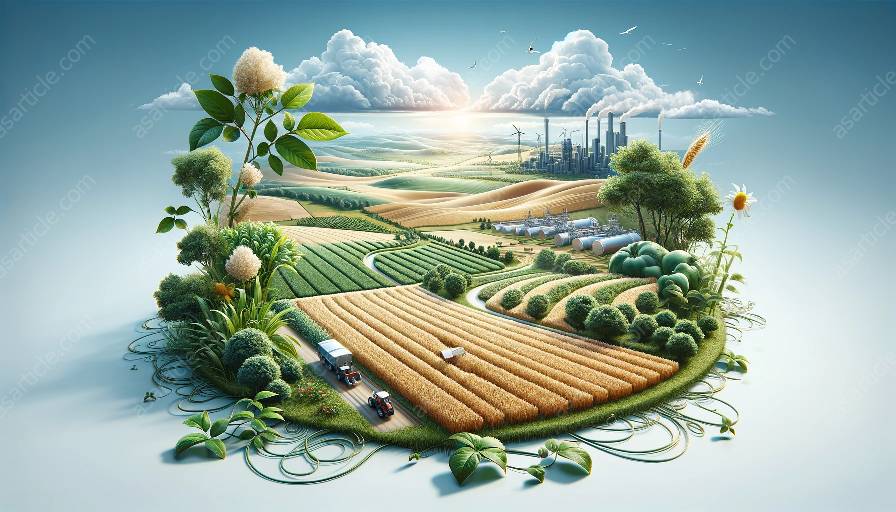Land use and cover change detection is a critical area of study in agricultural informatics and GIS applications, as it plays a significant role in shaping agricultural landscapes and influencing agricultural practices. This topic cluster explores the methods, technologies, and impact of land use and cover change detection on the field of agricultural sciences.
Understanding Land Use and Cover Change Detection
Land use and cover change detection refers to the process of monitoring and analyzing changes in the way land is used and the types of cover that exist on the land's surface. This includes changes in agricultural land, forests, urban areas, and natural habitats. These changes can have profound effects on ecosystems, biodiversity, and the overall sustainability of agricultural practices.
Importance in Agricultural Informatics
In the context of agricultural informatics, land use and cover change detection plays a crucial role in providing valuable insights for decision-making processes related to land management, crop planning, and resource allocation. By utilizing geospatial technologies and data analysis, researchers and practitioners can better understand the dynamics of land use changes and its implications for agricultural productivity and sustainability.
GIS Applications in Land Use and Cover Change Detection
Geographic Information Systems (GIS) are fundamental tools in the field of land use and cover change detection. GIS applications enable the integration of various spatial data, such as satellite imagery, topographic maps, and land use databases, to map, monitor, and analyze changes in land use and cover over time. These applications provide a visual and analytical platform for understanding the spatial patterns of land use changes and their impact on agricultural landscapes.
Technologies for Monitoring Land Use Changes
Advancements in remote sensing technologies have revolutionized the monitoring and detection of land use changes. Satellite imagery, aerial photography, unmanned aerial vehicles (UAVs), and other remote sensing platforms have enhanced the ability to capture high-resolution data for monitoring changes in agricultural land, deforestation, urban expansion, and other land cover activities. These technologies provide valuable information for understanding the extent and impact of land use changes on agricultural ecosystems.
Machine Learning and Data Analytics
Machine learning and data analytics techniques are increasingly being employed to analyze large-scale geospatial data for detecting patterns and trends in land use changes. These advanced analytical methods enable the identification of complex relationships between land use dynamics, climate change, and human activities, offering valuable insights for predicting future land use scenarios and suggesting adaptive management strategies in agriculture.
Impact on Agricultural Sciences
The detection of land use and cover changes has direct implications for agricultural sciences, as it influences the understanding of ecosystem services, soil quality, water resources, and biodiversity conservation. By comprehensively analyzing the impact of land use changes on agricultural landscapes, researchers can identify potential risks and opportunities for sustainable agricultural development and natural resource management.
Integrating Spatial Data in Agricultural Research
Integrating the findings of land use and cover change detection into agricultural research provides a holistic understanding of the spatial interactions between agricultural activities, land use changes, and environmental factors. This interdisciplinary approach contributes to the development of innovative agricultural practices, such as precision agriculture, agroforestry, and climate-smart farming, which aim to optimize land use efficiency and mitigate the negative effects of land cover changes on agricultural productivity.
Conclusion
Land use and cover change detection is a multi-faceted topic that intersects agricultural informatics, GIS applications, and agricultural sciences. By leveraging advanced technologies and analytical tools, researchers and practitioners can gain valuable insights into the dynamics of land use changes and their implications for sustainable agricultural development. Understanding the interplay between land use and cover changes is essential for informed decision-making in agricultural planning, resource management, and environmental conservation.

